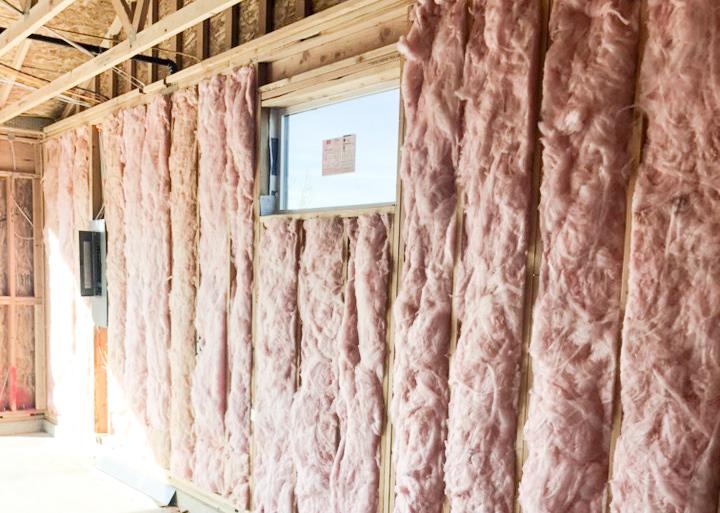New homes are built to save energy, and a primary component of that goal is insulation.
Additional insulation is one of the most cost effective ways to increase the energy efficiency of your home. The definition of insulation, however, is rapidly expanding as homebuyers and energy codes demand even better energy-use performance from new homes.
Insulation is rated based on its thermal resistance in a unit of measure called the R-value. The higher the R-value, the more effective the insulation is. Here in the Treasure Valley, energy codes dictate that the standard insulation values for new single family homes are R-19 in the exterior walls, R-38 in the ceiling, and either R-30 in the floors of an unconditioned crawl-space, or R-19 over the perimeter walls of a conditioned crawl-space.
Today, there are far more insulation options than ever before. Batt, Blown-in, and Spray-foam are three of the most common types of insulation.
Batt (or blanket) insulation is an inexpensive, readily available and effective insulation option. Batts are most commonly made of fiberglass, come in rolls, and are sized in different widths to fit between framing members like studs or floor joists. They are also sized in various depths to accomplish a range of R-values.
Blown-in insulation is typically composed of either a loose-fill fiberglass or cellulose (made from recycled newspaper and similar fibers). Blown-in insulation can be used in wall cavities by first placing a mesh over the framing and then filling the cavity with blown insulation. The most common area to use blown-in insulation is in the attic by blowing in a layer of fiberglass or cellulose to cover the ceiling. To achieve an R-value of R-38 in the ceiling, it takes about 12 inches of loose-fill cellulose or roughly 18 inches of fiberglass.
Spray-foam insulation is a fairly new technology that allows builders and new home buyers to achieve extremely high R-values and air-tight cavities. Spray-foam insulation is sprayed as a liquid into the area to be insulated and quickly expands to the desired depth. Spray foam is very effective and also quite expensive. It is a great option for conditioned crawl-spaces and conditioned attics to create air-sealed, insulated spaces.
One critical thing to remember about home energy efficiency is that the components of the home act together as a system. It is important to not only have sufficient insulation, but to also ensure that the home has a proper air-seal, an efficient and accurately sized heating and cooling system, energy efficient windows and doors, and properly installed materials. The more thought that can be put into the design and construction methods, the better. Some builders try to take advantage of advanced framing methods and other construction techniques to achieve the maximum amount of insulation in the wall cavity, and the maximum energy efficiency.
The push to make new homes more energy efficient is driving new and better insulation products and applications, and professional builders are at the forefront of keeping up with that evolution to provide better indoor comfort and help reduce monthly energy bills.



